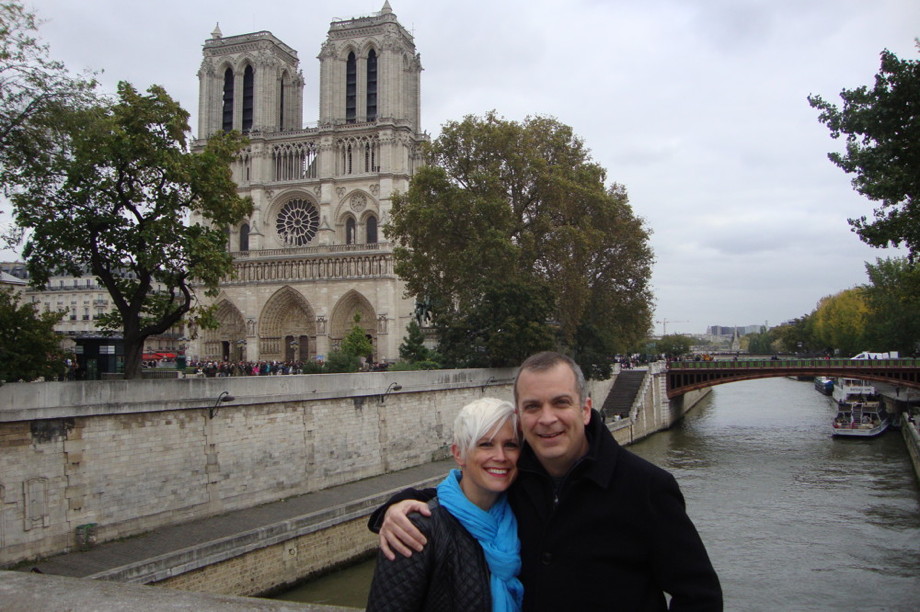A Month in Siena 10/16/2023
The Nobility (II)
A few more things explained
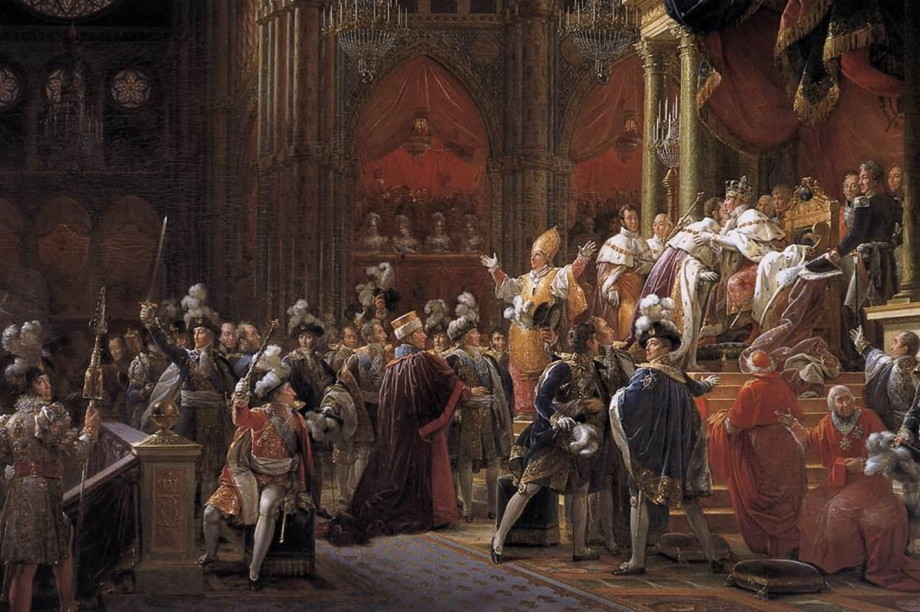
Coronation of Charles X, François Gérard, 1827
Reading time: 2 minutes
Please consider disabling your ad blocker, it disrupts site functions in addition to blocking ads. Thank you!
There were two kinds of nobility.
This is Part 2. Part 1 is here.
La noblesse d'épée (nobility of the sword) and la noblesse de robe (nobility of the gown). The former is what we most often think of as an aristocrat: an ancient family with titles, lands, a coat of arms, etc. The latter is privilege granted from serving as a judge or important administrator.
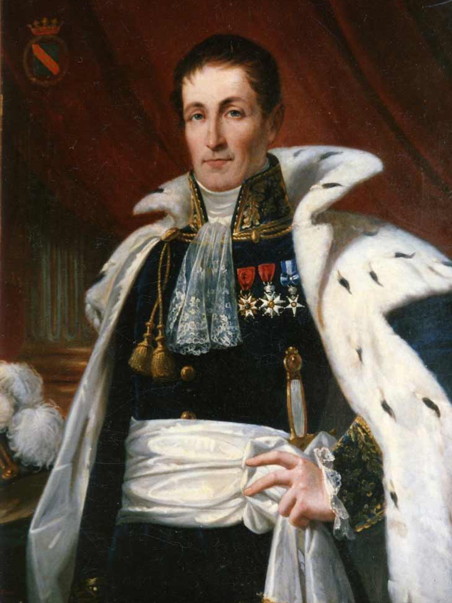
Louis de La Forest Divonne, Peer of France, la noblesse d'épee. Unknown artist, 1827. |
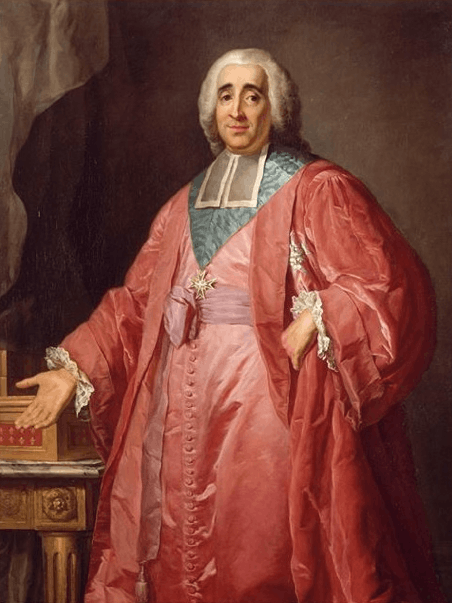
Maupeou, president of the Parliament of Paris, la noblesse de robe. Pierre Lacour the Elder, ca. 1775. |
In general, the upper echelons of society viewed la noblesse d'épée as vastly superior to la noblesse de robe.
They considered a family whose noble lineage stretched back hundreds of years, and whose forebears had fought for various kings, infinitely more généreux (courageous, elevated, pure, good) than someone granted noble privileges because he went to law school and served in the Parliament of Paris (the Appeals Court).
Relationship with the Monarchy
Historically, the relationship between the aristocracy and the monarchy has been turbulent.
To a middle class observer in the 21st century, their interests appear aligned, but French history is littered with aristocratic revolts and rebellions against the king.
La Guerre folle (1485-88), the Wars of Religion (1562-98), and la Fronde (1648-53), as well as serious frictions which contributed to, and even hastened, the French Revolution (1789-99), exemplify the troubled relationship between the nobility and the monarchy.
What did they fight over? The usual things. Money, taxes, privilege, the line of succession. In a word: power.
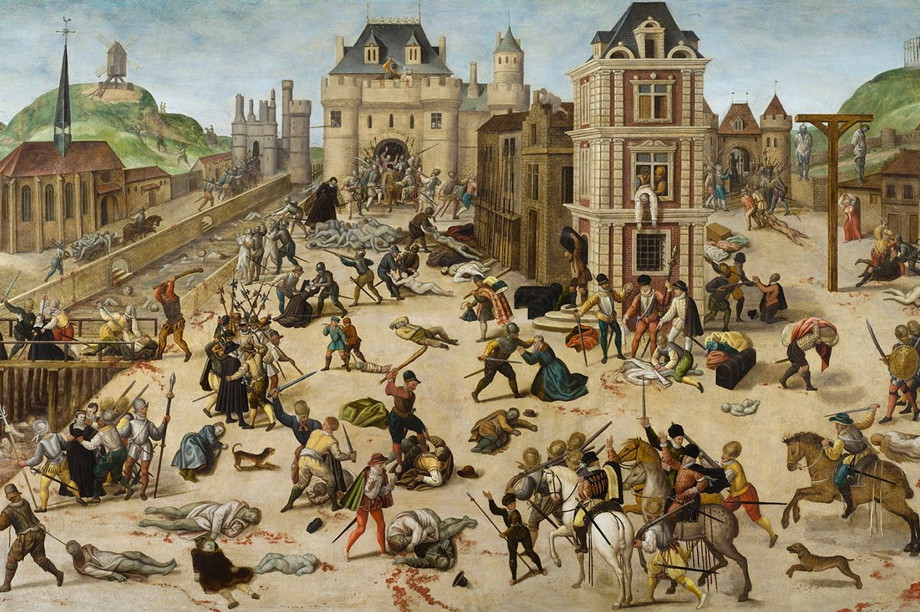
The St Bartholemew's Day Massacre. François Dubois, ca 1576. The event occurred in August, 1572. |
If you're familiar with the history of Louis XIV, or the television show Versailles, such prolonged, expensive, bloody conflicts are why the Sun King forced the aristocracy to his palace outside Paris.
Louis XIV was the first absolutist (all-powerful) king in French history due in part to his "gilded prison" in Versailles where he could control and watch over the same aristocrats who had fought against his prime minister, Cardinal Mazarin, in the 1650s while he, Louis, was still a child.
After the Revolution
After the abolition of hereditary monarchy, the execution of Louis XVI, the death of Louis XVII in the Temple Prison, failed aristocratic uprisings to take back France for Louis XVIII, Napoleon Bonaparte's coup-d'état, the murder of the Duc d'Enghien, and Napoleon's dominance of Europe, you might think the aristocracy could finally come together to defeat a common enemy.
Yes and no.
The French nobility did manage to work with the Allies in a semi-coherent fashion. Louis XVIII was restored to the throne, after all.
Louis XIV was the first absolutist (all-powerful) king in French history due in part to his "gilded prison" in Versailles.
The most radical nobles, however (the "ultras") were often called "more royalist than the king." They were angry, vengeful, extreme in their interpretation of law and precedent, and unconcerned that their retrograde policies were unsustainable in 19th century France.
It may not be a surprise that the philosophical, political, and social differences which existed between them and other aristocratic groups would become more apparent during the Restoration, particularly under Charles X, and would lead to another revolution—and the king's abdication—in 1830.
Read more
- About the Novels
- Historical Background: The Bourbon Restoration - Part 1
- Historical Background: The Bourbon Restoration - Part 2
- Historical Background: The Nobility - Part 1
- Historical Background: The Nobility - Part 2
- Commentary & Theory: Historical Truth
Recent Posts
Eyewitness Travel: France 4/24/2023
L'Africain du Groenland 8/2/2022
On the Plain of Snakes 5/17/2022
Volcanoes, Palm Trees, and Privilege 3/22/2022
L'axe du loup 2/28/2022
The Art of Travel 12/31/2021
Postcard: Los Angeles 11/5/2021
Afropean 8/6/2021
Roadrunner 7/22/2021
Popular Tags
Archive
Show moreAbout
Recent Tweets
If you toggle the switch above the words "Recent Tweets" and it still says, "Nothing to see here - yet," it means the idiot who broke Twitter either hasn't gotten around to fixing this feature, or intentionally broke it to get us to pay for it (which is moronic, I can easily live without it and it generated traffic to his site).


